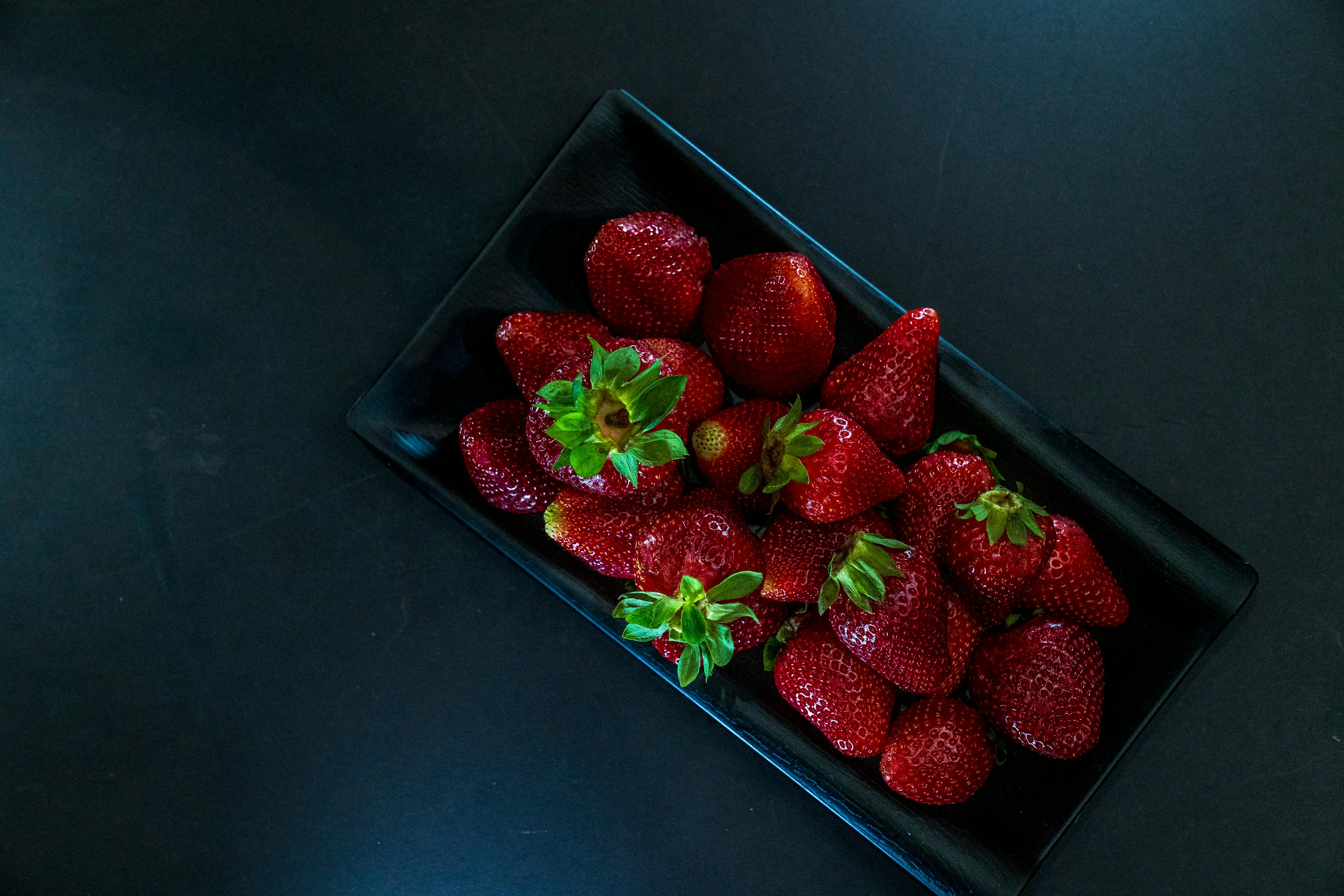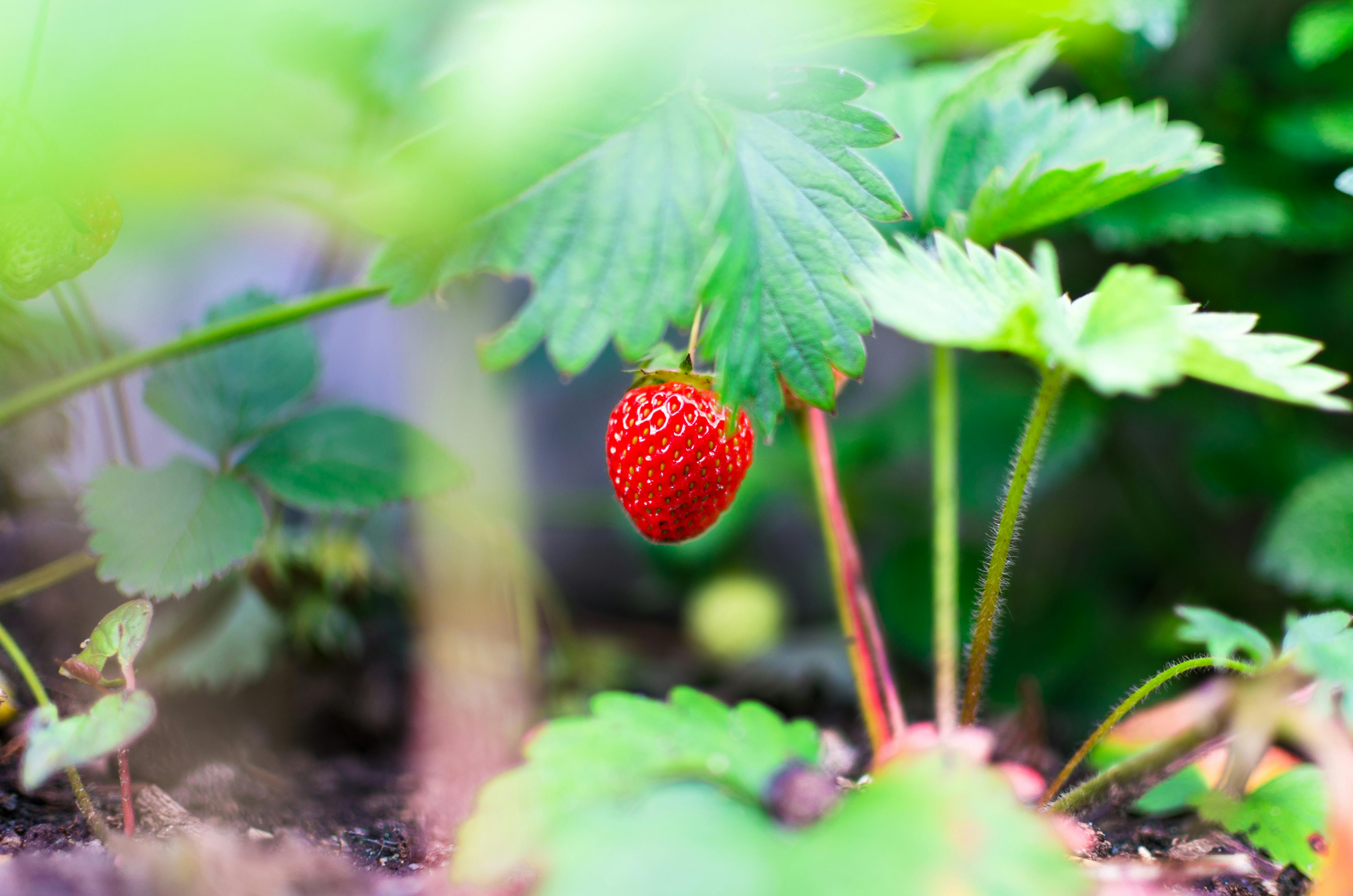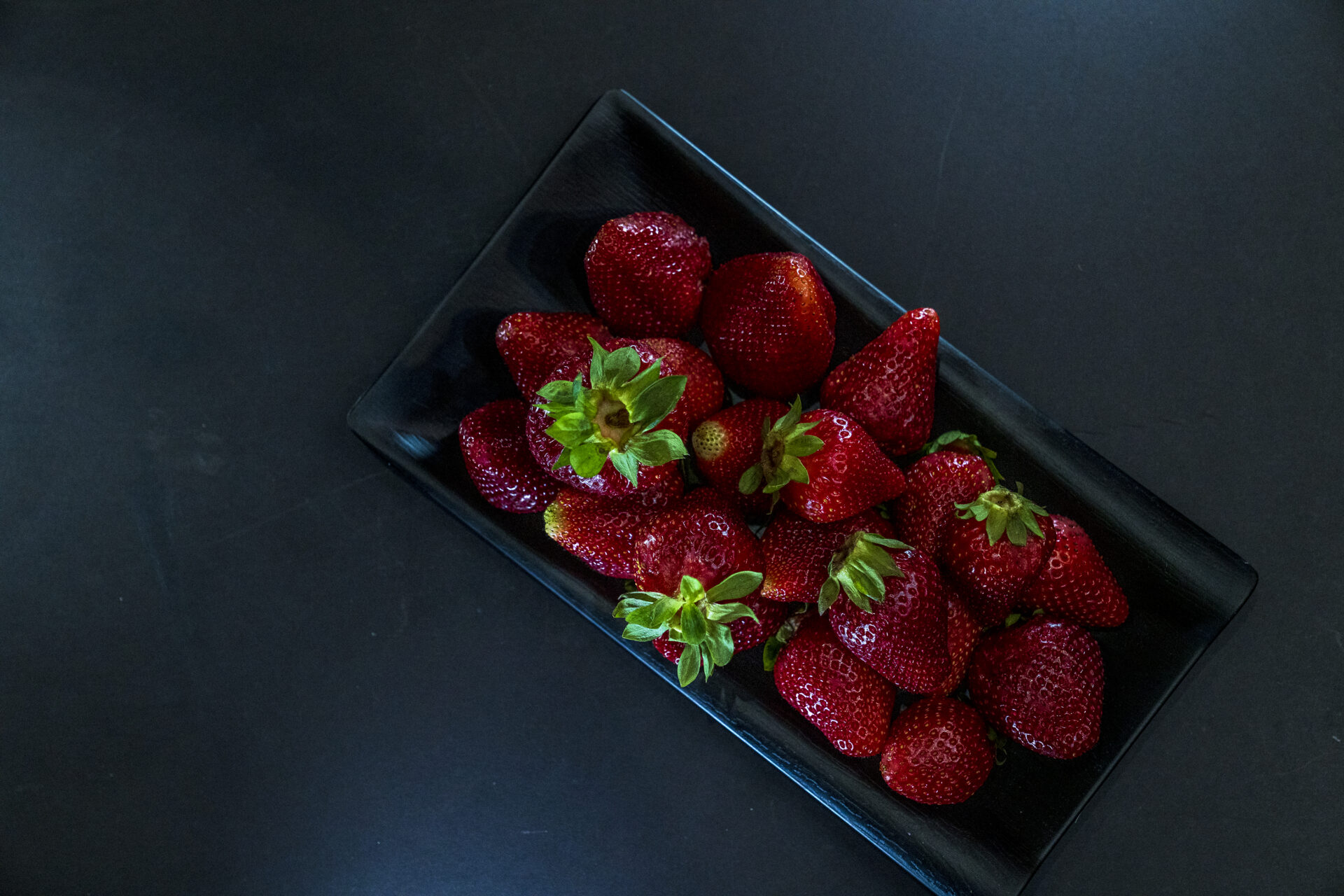Strawberry plants are a delicious and nutritious fruit that can be found all around the world. However, they are not without predators. Many animals enjoy snacking on strawberry plants, from birds to mammals to insects. In this article, we will explore some of the creatures that feast on strawberry plants and the potential impacts this may have on their growth and production.Strawberry plants are eaten by a variety of animals, including birds, deer, mice, groundhogs, and rabbits. These animals can cause serious damage to strawberry plants if left unchecked.
Common Pests of Strawberry Plants
Strawberry plants can be susceptible to a variety of pests, including slugs, snails, spider mites, aphids, and whiteflies. Slugs and snails can cause significant damage to strawberry plants by feeding on the foliage and fruit. To prevent these pests, you can use bait traps or handpick them off the plants.
Spider mites can also cause damage to strawberry plants by sucking sap from the leaves. To control these pests, you should keep the plants well-watered and spray them with a suitable insecticide.
Aphids are small insects that feed on young leaves and stems of strawberry plants. To control aphids, you can use insecticidal soap or neem oil spray as these are effective in controlling aphid populations. You should also keep weeds away from your strawberry plants as these can provide shelter for aphids.
Whiteflies are tiny insects that feed on the underside of strawberry foliage and cause yellow spots to appear on the leaves. To control whiteflies, you should remove any affected leaves from your plant and dispose of them in a sealed bag or bin. You can also use sticky traps to capture whiteflies before they reach your plants or spray them with an appropriate insecticide.
By taking preventive measures such as keeping your garden free of weeds and using traps or sprays for specific pests, you can keep your strawberry plants healthy and productive for years to come.
Types of Insects that Attack Strawberry Plants
Strawberries are a popular and delicious fruit that can be grown in the garden, and they are relatively easy to maintain. However, there are a variety of insects that can cause damage to strawberry plants. These include grasshoppers, aphids, caterpillars, flea beetles, and slugs. Each of these pests can wreak havoc on your strawberry plants if they become established, so it’s important to be aware of the signs and symptoms of infestation.
Grasshoppers love to feed on the tender leaves of strawberry plants, resulting in large patches of damage on the plant. If you notice your strawberry plants have large chunks missing from their leaves or have an overall wilted appearance, grasshoppers may be responsible. To control this pest, you can hand pick them off or use an insecticide specifically labeled for grasshopper control.
Aphids are small sap-sucking insects that can cause stunted growth and deformed leaves on strawberry plants. They also excrete a sticky substance called honeydew which can lead to further issues such as sooty mold and ant infestations. To prevent aphids from taking hold in your garden, plant companion crops such as radishes or nasturtiums that naturally repel them. You can also use insecticidal soap or neem oil as a form of control if infestation has already occurred.
Caterpillars tend to feed on the foliage of strawberry plants and can cause large amounts of damage if left unchecked. The most common type of caterpillar found on strawberries is the sphinx moth caterpillar which has yellow stripes running down its body. To prevent an infestation from occurring in the first place it’s important to keep your garden free from weeds where caterpillars may hide out during the day time hours. If you do find caterpillars present in your garden you can handpick them off or use a biological pesticide such as Bacillus thuringiensis (Bt).
Flea beetles are small black beetles with yellowish-brown spots that will chew small holes in the foliage of strawberry plants as they feed on them. They also spread diseases such as leaf spot disease which will cause discoloration and wilting of leaves over time if left untreated. To discourage flea beetle activity in your garden you should keep weeds cleared away and use floating row covers when needed to protect vulnerable plants from attack by these pests.
Finally slugs are slimy grayish-black creatures that love munching on young shoots and tender leaves on strawberry plants at night time hours when they’re most active. Slugs cause large amounts of damage very quickly so it’s important to take action quickly if you notice their presence in your garden beds or pots filled with strawberries by setting up barriers around vulnerable plants such as copper tape or diatomaceous earth which act as natural repellents for slugs while still being safe for humans and pets alike!
How to Identify Insects on Strawberry Plants
Identifying insects on strawberry plants can be difficult, especially for those who are not familiar with the different types of bugs that may be present. Thankfully, there are a few simple steps you can take to identify the insects that may be present in your strawberry patch. Before attempting to identify any insect found on a strawberry plant, it’s important to make sure that the insect is, in fact, an insect and not another organism such as a spider or mite. Once you’ve determined that it is an insect, here are a few ways you can identify it:
One method for identifying insects on strawberry plants is to use a magnifying glass or microscope. This will allow you to get a better look at the physical characteristics of the insect, such as its size and coloration. Paying attention to these details can often help you determine what type of insect it is. Additionally, you can also look at photos of common bugs found on strawberries and see if any match what you have found.
Another way to identify insects on strawberry plants is by observing their behavior. Different types of insects will have different behaviors when they come into contact with strawberries. For example, aphids generally feed by sucking plant sap from the leaves and stems while earwigs tend to feed on organic matter near the base of strawberry plants. Taking note of what type of behavior each bug exhibits can help narrow down their identity.
Finally, if all else fails, you can always bring a sample of the bug in question to your local extension office or university for further identification. They will likely have experts that will be able to accurately identify any type of bug found on your strawberry plants.
Controlling Insects on Strawberry Plants
Strawberry plants are vulnerable to a variety of insects. To protect your strawberry crop, it is important to be aware of the pests that can attack your plants and take steps to control them. There are a number of ways you can control insects on strawberry plants, including physical removal, biological controls, and chemical treatments.
Physical Removal
One way to control insects on strawberry plants is by physically removing them from the plants. This can be done with handpicking or by using a vacuum cleaner. Handpicking involves searching the plant for any visible insects and then plucking them off with your fingers or tweezers. Vacuuming is another method which involves using a vacuum cleaner to suck up any bugs that may be hiding in the leaves or soil around the plant.
Biological Controls
Another way to control insects on strawberry plants is through biological controls, such as releasing beneficial predators or parasites to the environment. Beneficial predators are organisms that naturally feed on other pests, helping to reduce their populations. Parasites are organisms that lay their eggs inside other organisms, resulting in the death of the host pest once they hatch.
Chemical Treatments
Finally, chemical treatments can also be used as an effective method for controlling insect pests on strawberry plants. Chemical treatments typically involve applying an insecticide directly to the plant or its surrounding area in order to kill any pests that may be present. It is important to read all labels carefully before using any type of chemical treatment and be sure to follow all instructions for safe use and storage of any products you purchase.

Organic Methods to Control Insects on Strawberry Plants
Organic methods are an effective way to control insects on strawberry plants. These methods use natural materials and processes to reduce the number of pests that damage the plants. Some of the most commonly used organic techniques include hand-picking, mulching, and using beneficial insects.
Hand-picking is one of the simplest yet effective ways of controlling pests on strawberry plants. This involves searching the plant for bugs and removing them by hand. This method is especially useful for controlling small numbers of pests that can be easily seen, such as aphids and caterpillars.
Mulching is another organic method used to control insect infestations on strawberry plants. Mulch can be made from a variety of materials, such as straw, hay, grass clippings, or wood chips. The mulch acts as a barrier between the soil and the plant’s leaves and stems, preventing insects from attacking the plant directly. It also helps retain moisture in the soil, which can help reduce insect infestations by creating an unfavorable environment for some types of pests.
Using beneficial insects is another organic approach for controlling pest populations on strawberry plants. Beneficial insects are those that feed on or parasitize other pest species, reducing their numbers naturally without harming the plant itself. Some common examples include ladybugs, lacewings, parasitic wasps, and predatory mites. These beneficial insects can be released into the garden or purchased from a nursery or garden center.
Organic methods are an effective way to control insect infestations on strawberry plants without resorting to chemical pesticides that may have negative environmental impacts. Hand-picking bugs off plants, mulching around them with natural materials, and using beneficial insects are all great options for keeping your strawberries healthy and free of pests!
Chemical Methods to Control Insects on Strawberry Plants
The use of chemical methods to control insects on strawberry plants is a common practice among farmers and gardeners. Chemical insecticides, such as pyrethroids, organophosphates, carbamates, and neonicotinoids, are commonly used to kill or repel insects that feed on strawberries. These chemicals can be applied in several ways: as a dust, granules, or liquid spray. In some cases, growers also use baits or traps to attract and kill pest insects.
It is important to note that chemical insecticides can be toxic to beneficial insects such as pollinators and predatory species that provide natural pest control. Therefore, it is important for growers to select the right product and apply it according to the label instructions. Additionally, chemical insecticides should only be used when necessary and in combination with other management practices such as crop rotation and good sanitation practices.
Growers should also consider using non-chemical alternatives for controlling pests on strawberry plants. These alternatives include using physical barriers such as row covers or hand picking pests off of the plants; encouraging beneficial insects by planting flowers; using biological control agents such as Bacillus thuringiensis (Bt); and cultural practices such as mulching or pruning. Using a combination of these methods can provide effective pest management without relying solely on chemical insecticides.
Common Diseases that Affect Strawberry Plants
Strawberries are a popular fruit that is enjoyed in many different forms including jams, jellies, desserts, and as a fresh snack. Unfortunately, like all plants, strawberries can be affected by a variety of diseases. The most common diseases that affect strawberry plants include gray mold, powdery mildew, verticillium wilt, leaf scorch, and red stele.
Gray Mold
Gray mold is caused by the fungus Botrytis cinerea and often occurs when the weather is wet and humid. This disease causes spots on the leaves that turn brown or black and eventually rot. It also affects the fruit of the strawberry plant, causing gray-brown spots that will rot away. To help prevent this disease from occurring, avoid overhead irrigation or wetting foliage when watering your strawberry plants.
Powdery Mildew
Powdery mildew is caused by the fungus Podosphaera aphanis and can affect both the leaves and fruits of strawberry plants. It appears as a white powdery growth on both sides of the leaves and will eventually cause them to turn yellow or brown before they die off. To help prevent this disease from occurring, make sure your strawberry plants have adequate airflow to reduce humidity levels around them.
Verticillium Wilt
Verticillium wilt is caused by two types of fungi: Verticillium albo-atrum and V. dahliae. This disease affects mainly older leaves of the plant but can also spread to younger leaves if not treated early enough. It appears as yellowing or browning on one side of the leaf while leaving the other side green in color. To help prevent this disease from occurring, make sure to clean up any fallen debris around your strawberry plants as soon as possible to reduce moisture levels in these areas where fungi can grow unchecked.
Leaf Scorch
Leaf scorch is caused by an excess amount of sunlight exposure on the leaves of your strawberry plant which can damage them over time if not treated quickly enough. It appears as small yellow or brown spots on the leaves which eventually spread and cause them to die off completely if left untreated for too long. To help prevent this disease from occurring, make sure to provide plenty of shade for your strawberry plants during periods when there is intense sunlight exposure such as mid-day hours during summer months when temperatures are highest in most regions.
Red Stele
Red stele is caused by a fungus called Phytophthora fragariae which typically affects young plants more than older ones due to their weaker root systems which are more prone to infection from this pathogen. It appears as reddish streaks on stems near ground level which can eventually spread up higher parts of the plant if not treated quickly enough with fungicides or other chemical treatments recommended for this particular pathogen species by local agricultural specialists in specific regions where it may be present more heavily than others due to environmental conditions favorable for its growth.
By understanding these common diseases that affect strawberries it will be easier for you to spot them early so you can take action quickly before they cause any serious damage to your plant’s health or yield so you can continue enjoying delicious strawberries each season!

Conclusion
Strawberry plants can be seen as a tasty treat to humans, but unfortunately, they are also favorites of a variety of pests and animals. Slugs, aphids, deer, birds, mites, whiteflies and nematodes are all common predators of strawberry plants. Even with the best prevention methods in place some of these creatures can still get through. To ensure your strawberry patch remains safe and healthy, it is important to monitor the plants for signs of damage and take action as soon as it is noticed. Through proper identification and preventive methods you can keep your strawberry plant safe from the predators that lurk in your garden.
By understanding what eats strawberry plants you can create an effective strategy to protect them from being eaten or damaged by these pests and animals. Prevention is key and by using a combination of physical barriers, organic products, beneficial insects and natural repellents you should be able to keep these predators at bay. Protecting your strawberry plants is an important part of keeping them healthy so that you can enjoy their delicious fruits for years to come.



